Welcome to the Janison Insights help portal
Marking
Blind quality monitoring (BQM) is the technique of monitoring Marker consistency by randomly presenting a Marker with a candidate response that was standardised during S1, and then monitoring any error/discrepancy.
You can view how a Marker is tracking against the monitoring tolerances and compare these with the team average. Markers will be unaware that they are being monitored.
BQM can use either random allocation or stratified monitoring.
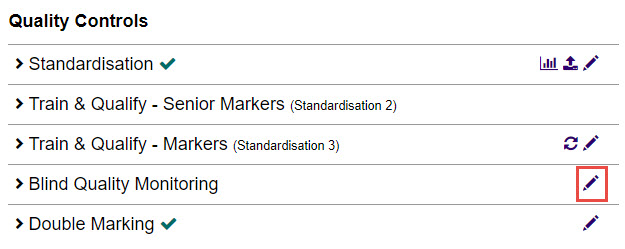
Complete the following:
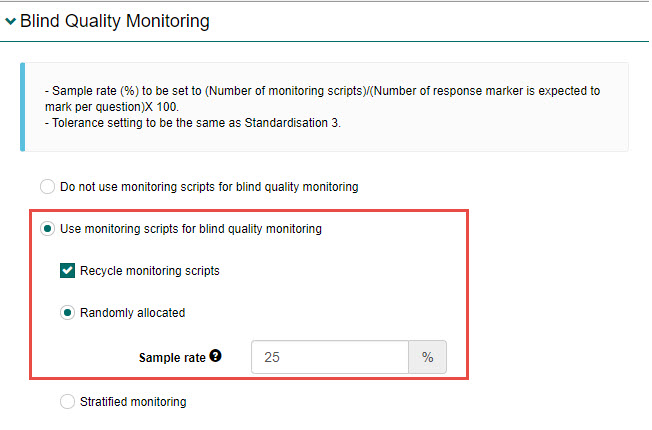
For each question, complete the following:
Tip
The values entered here will automatically populate across the grid, but you can change them if required.
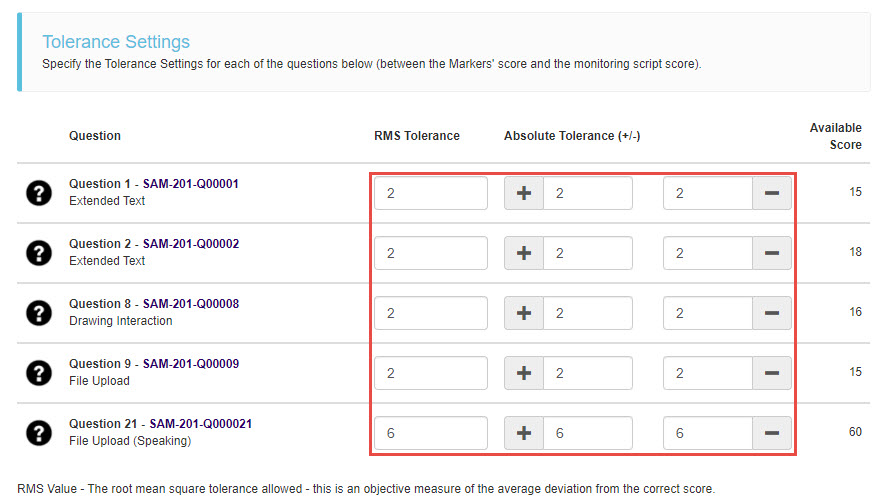
| Option | Description |
|---|---|
| Send the notification to SM’s or KP’s | This sends a notification to Senior Markers or key personnel alerting them to a deviation outside of the tolerance level set. |
| Suspend the marker | This suspends the Marker from marking. |
A tolerance level will need to be set in the No. of out-of-tolerance scripts before action is taken field. When the Marker exceeds this tolerance (eg. 2 scripts) the system will take the specified action.
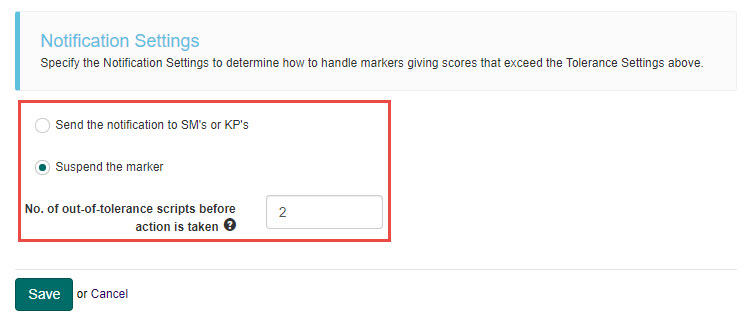
Stratified monitoring is an extension of BQM and allows you to break the sequence of the monitoring scripts into stages and blocks. The placement of specific monitoring scripts can be set in different stages. You have an option to manually allocate monitoring scripts to your preferred location.
To set stratified monitoring:

Complete the following:

Tip
The values entered here will automatically populate across the grid, but you can change them if required.
| Option | Description |
|---|---|
| Send the notification to SM’s or KP’s | This sends a notification to Senior Markers or key personnel alerting them to a deviation outside of the tolerance level set. |
| Suspend the marker | This suspends the Marker from marking. |
A tolerance level will need to be set in the No. of out-of-tolerance scripts before action is taken field. When the Marker exceeds this tolerance (eg. 2 scripts) the system will take the specified action.

Tip
The values entered here will automatically populate across the grid, but you can change them if required.

Important
Standardisation 1 must be completed before you can configure these settings.
Configure the Stratified Sequence area by completing the following:
Select the drop-down arrow of the Generate All button and choose one or more options (optional) as follows:
| Option | Description |
|---|---|
| Allocate monitoring scripts | This will allocate specific scripts to the cells. |
| Repeat sequence for all items | If this option is selected, you won’t need to generate scripts for each question. |
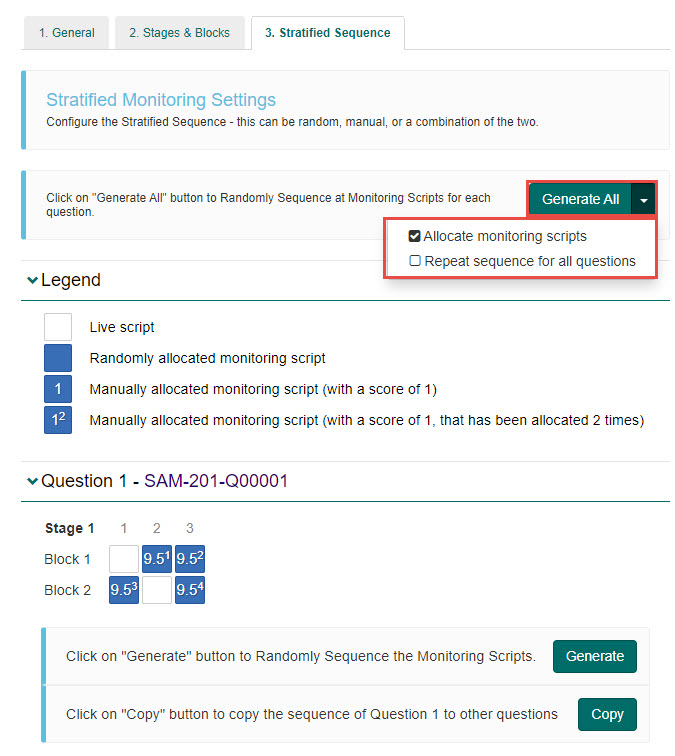
Important
You can hover over the cells to view more information.
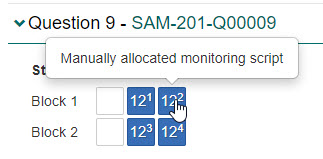
For manually allocated scripts, there are four actions available:
The first step is the same for all four actions. That is, select a manually allocated monitoring script.
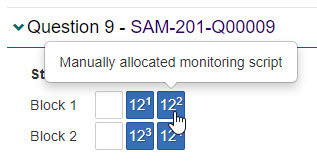
Select the Change the position of this monitoring script option, then select the Continue button.
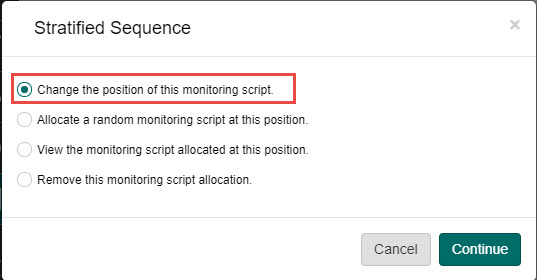
Select the required values in the Stage, Block and Index fields, then select the Save button.

The script displays in the new position.
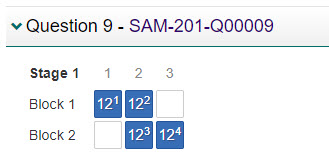
Select the Allocate a random monitoring script at this position option, then select the Continue button.

The cell will change from a manually allocated monitoring script to a randomly allocated monitoring script.
Select the View the monitoring script allocated at this position option, then select the Continue button.

The script will appear in a popup, where you can view the standardisation scores.
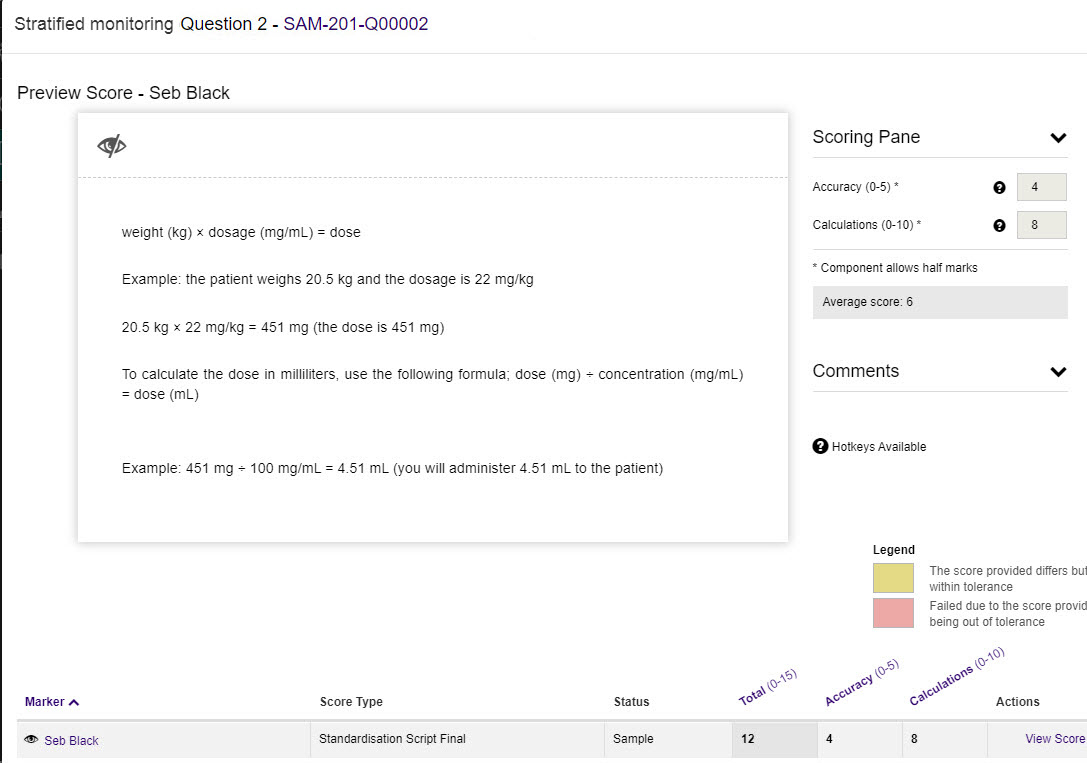
Select the Remove the monitoring script allocation option, then select the Continue button.

The cell will change from a manually allocated monitoring script to a live script.
There are three actions available for randomly allocated scripts:
The first step is the same for all three actions. That is, select a randomly allocated monitoring script.
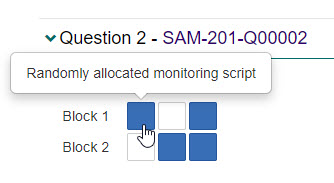
Select the Change the position of this monitoring script option, then select the Continue button.

Select the required values in the Stage, Block and Index fields, then select the Save button.

The script displays in the new position.
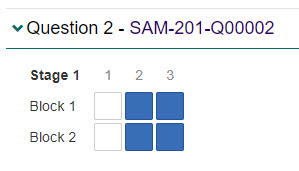
Select the Allocate a random monitoring script at this position option, then select the Continue button.
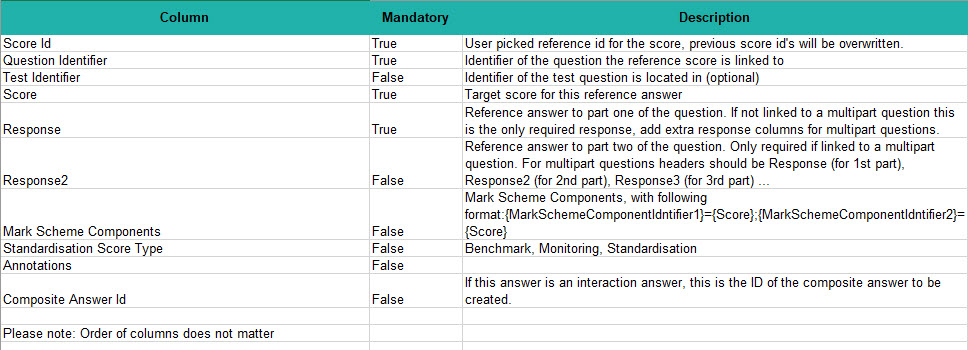
Use the arrows to scroll through the scripts until you identify the required one (if applicable), then select the Allocate button.

The cell will change from a randomly allocated monitoring script to a manually allocated monitoring script.
Select the Remove this monitoring script allocation option, then select the Continue button.

The cell will change from a randomly allocated monitoring script to a live script.
There are two actions available for live scripts:
The first step is the same for both actions. That is, select a live script.

Tip
The steps for these are the same as those in the Manage randomly allocated scripts section.
1300 857 687 (Australia)
+61 2 6652 9850 (International)
ACN 091 302 975
ABN 35 081 897 494
© 2024 Janison
Janison acknowledges the traditional owners of the land on which we work and meet. We acknowledge the continuous care of the land, animals and waterways. We pay our respects to Elders past, present and emerging.